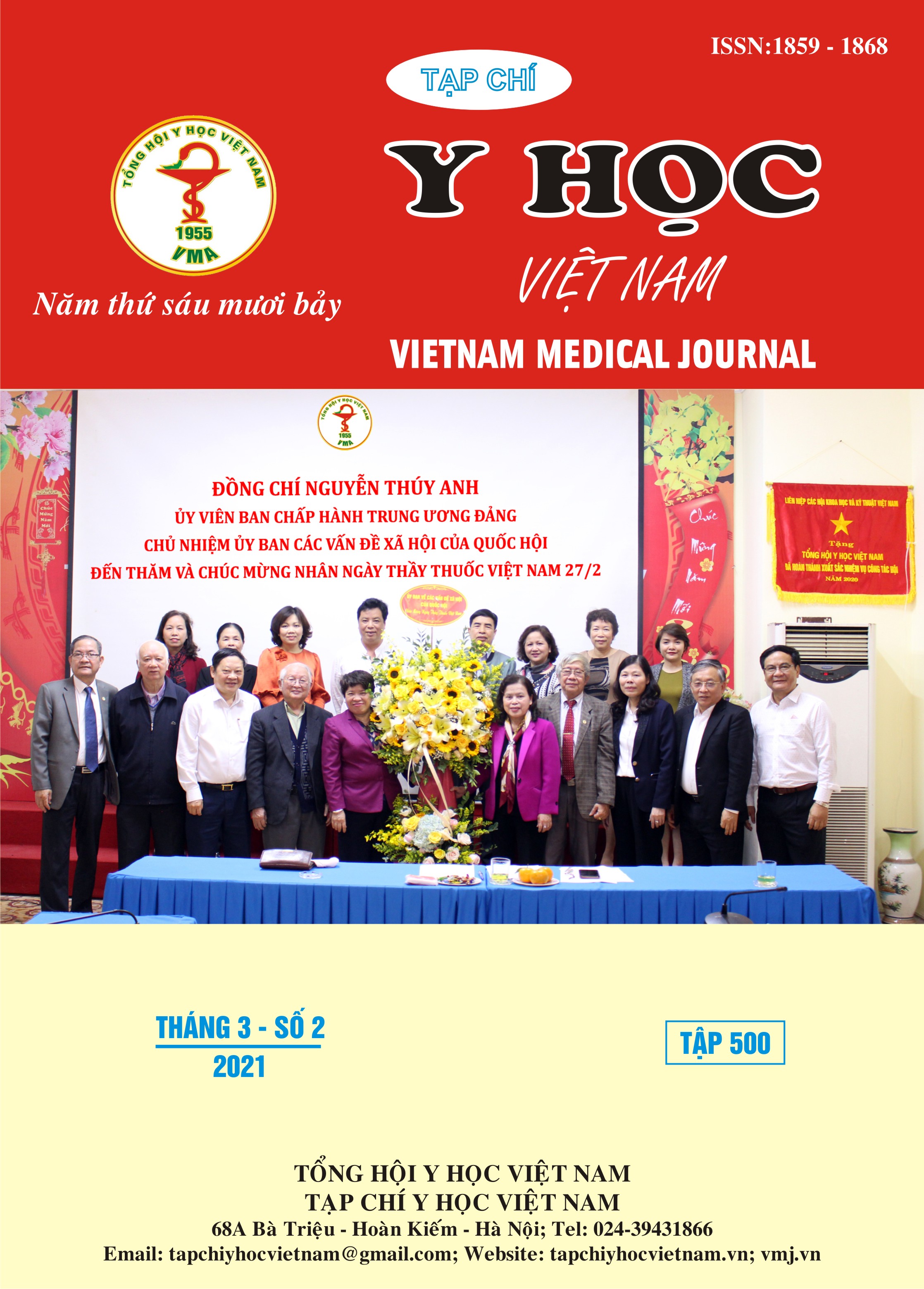COMPLIANCE WITH LIFESTYLE RECOMMENDATIONS FOR HYPERTENSION IN OUT-PATIENTS AT HOAN MY SAI GON CLINIC
Main Article Content
Abstract
Aims: To describe the non-drug treatment compliance ratein hypertensive patients at Hoan My Saigon Clinic. Research method: In this descriptive cross-sectional study, we interviewed 387 randomized patients using a prepared questionnaire and also collected clinical data from the clinic’s prescription software. Adherence to non-drug therapy was compiled based on the Dietary Guidelines for Disease Management scale. Results: Most of patients complied with 1 to 6 out of 8 healthy lifestyle recommendations. However, they did not meet the ideal standards. Many people used salt when eating fruits or using dipping sauce with meals. When asked about physical activities and sports, walking was the exercise of choice for the most patients (63.0%). There was a statistically significant relationship between higher adherence to lifestyle changes and gender (p<0.01), high education level (p <0.01) and co-morbidity (p <0.01). Conclusion: It is strongly recommended to increase patient’s awareness about lifestyle changes. The role of salt-intake reduction in hypertension should be emphasized because this was a common knowledge, but people have not practiced well. Other lifestyle changes should be reinforced.
Article Details
Keywords
Hypertension, lifestyle, salt intake, exercise
References
2. Nguyễn Thị Thơm, Bùi Văn Cường, Nguyễn Hồng Hạnh, Phạm Thị Thu Hương, Đỗ Minh Sinh (2018), Thực trạng tuân thủ điều trị tăng huyết áp của người bệnh điều trị ngoại trú tại Bệnh Viện Đa Khoa Tỉnh Quảng Ninh năm 2017. Khoa học Điều dưỡng – Trường ĐH Điều dưỡng Nam Định, 01(3),tr.35-43.
3. Akbarpour Samaneh, Khalili Davood, Zeraati Hojjat, Mansournia Mohammad Ali, Ramezankhani Azra & Fotouhi Akbar.(2018). Healthy lifestyle behaviors and control of hypertension among adult hypertensive patients. Scientific Reports,8(8508):1-9.
4. Lim SS, Vos T, Flaxman AD, et al. (2012). A comparative risk assessment of burden of disease and injury attributable to 67 risk factors and risk factor clusters in 21 regions, 1990-2010: a systematic analysis for the Global Burden of Disease Study. 2010. Lancet. 380:2224–2260.
5. Moura André, Almeida Godoy, Simone de Cesarino, Cláudia Bernard (2016).Factors determining non-adherence to hypertension treatment. Fundamental Nursing Master by University of Sao Paulo. Brazil,34-35.
6. Morisky DE, DiMatteo MR (2011). Improving the measurement of self-reported medication nonadherence: Final response. J Clin Epidem. 64:258–263.
7. Niklas Arkadiusz, Flotyńska Anna, Puch-Walczak Aleksandra, Polakowska Maria, et al.(2018). Prevalence, awareness, treatment and control of hypertension in the adult Polish population – Multi-center National Population Health Examination Surveys – WOBASZ studies. Arch Med Sci.,14(5): 951–961
8. Park Kyong, Cho Sukyung, Bower Julie K. (2016). Changes in Adherence to NonPharmacological Guidelines for Hypertension. PLoS ONE. 11(8): e0161712


